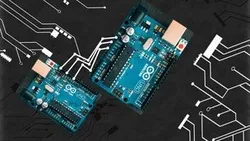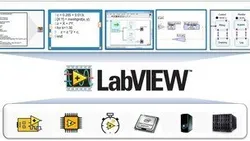
The Arduino Platform and C Programming 
This course provides an introduction to the Arduino platform, including its physical board, libraries, and IDE. Students will learn how to use shields to sense and control the physical world, as well as how to program the Arduino using C code. No discussion forums are included. ▼
ADVERTISEMENT
Course Feature
![]() Cost:
Cost:
Free
![]() Provider:
Provider:
Coursera
![]() Certificate:
Certificate:
Paid Certification
![]() Language:
Language:
English
![]() Start Date:
Start Date:
10th Jul, 2023
Course Overview
❗The content presented here is sourced directly from Coursera platform. For comprehensive course details, including enrollment information, simply click on the 'Go to class' link on our website.
Updated in [March 06th, 2023]
What skills and knowledge will you acquire during this course?
The skills and knowledge that will be acquired during this course include:
1. Arduino Basics
2.Programming Fundamentals
3. Advanced Concepts
4. Debugging and Communication
How does this course contribute to professional growth?
This course on the Arduino Platform and C Programming contributes to professional growth by providing individuals with the knowledge and skills necessary to work with the Arduino platform and program it using C code. By completing this course, individuals will be able to outline the composition of the Arduino development board, read board schematics, and install the Arduino IDE. They will also learn about shields and how they are used to perform various functions, as well as the role of libraries in utilizing shields. Additionally, individuals will gain the ability to compile and run programs, name C variables and types, use conditionals and loops, and explain functions and their invocation. They will also understand the implications of global variables and undertake the Arduino build process. Furthermore, individuals will learn about the tools behind the IDE, how to invoke functions in classes, and the structure of an Arduino sketch. They will also gain the ability to access the pins of the Arduino, differentiate between digital and analog pins, and debug embedded software. The course also covers the importance of controllability and observability in the debugging process, common debugging architectures for embedded systems, and how the UART Serial communication protocol works. Lastly, individuals will learn about the Arduino Serial library and how it performs serial communication. Overall, this course equips individuals with valuable skills and knowledge that can contribute to their professional growth in the field of Arduino development and C programming.
Is this course suitable for preparing further education?
This course covers various aspects of the Arduino platform and C programming. It teaches students about the physical board, libraries, and the integrated development environment (IDE). Additionally, students will learn about shields, which are smaller boards that can perform different functions. The course also focuses on programming the Arduino using C code and controlling external devices through software. By the end of the course, students will be able to outline the composition of the Arduino board, program its firmware, read board schematics, install the Arduino IDE, understand the use of shields and libraries, compile and run programs, work with C variables and types, use conditionals and loops, explain functions and global variables, undertake the Arduino build process, describe the tools behind the IDE, invoke functions in classes, understand the structure of an Arduino sketch, access the pins of the Arduino, differentiate between digital and analog pins, debug embedded software, explain the importance of controllability and observability in the debugging process, describe common debugging architectures for embedded systems, and understand how the UART Serial communication protocol and Arduino Serial library work.
Pros & Cons

Easy to complete in one day.

Helpful for beginners.

Good for learning electronics.

Simple language used for explanation.

Good for testing circuits.

Too basic for university level.

Little to no examples.

No discussion forums.

Peer grading review delays progress.

Requires previous knowledge.
Course Provider

Provider Coursera's Stats at AZClass
Discussion and Reviews
0.0 (Based on 0 reviews)
Explore Similar Online Courses

Learn JavaScript - Full Course for Beginners

Digital Customer Analytics

Python for Informatics: Exploring Information

Social Network Analysis

Introduction to Systematic Review and Meta-Analysis

The Analytics Edge

DCO042 - Python For Informatics

Causal Diagrams: Draw Your Assumptions Before Your Conclusions

Whole genome sequencing of bacterial genomes - tools and applications

Arduino Communication with SPI Protocol

Interfacing LabVIEW With Arduino via LINX

Arduino SMS Sending Motion Detector using Python
 Related Categories
Related Categories
 Popular Providers
Popular Providers
Quiz
 Submitted Sucessfully
Submitted Sucessfully
1. What is the purpose of the Arduino platform?
2. What type of programming language is used to program the Arduino board?
3. What is the role of libraries in the use of shields?


Start your review of The Arduino Platform and C Programming